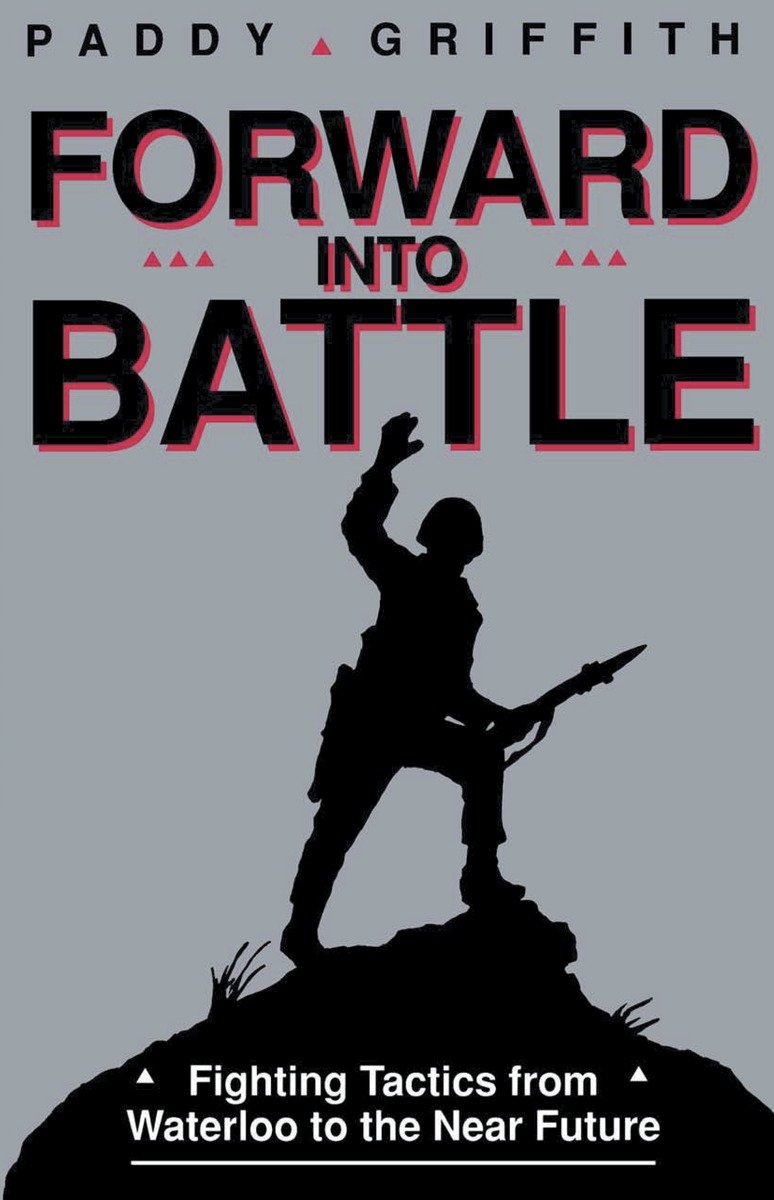Forward into Battle: Fighting Tactics from Waterloo to the Near Future
12.00 JOD
Please allow 2 – 5 weeks for delivery of this item
Add to Gift RegistryDescription
The first edition (1981) took a critical look at the accepted wisdom of historians who interpreted battlefield events primarily by reference to firepower. It showed that Wellington’s infantry had won by their mobility rather than their musketry, that the bayonet did not become obsolete in the nineteenth century as is often claimed, and that the tank never supplanted the infantryman in the twentieth. A decade later, the author has been able to fill out many parts of his analysis and has extended it into the near future. The Napoleonic section includes an analysis of firepower and fortification, notably at the Battle of New Orleans in 1815. Additional discussions of the tactics of the American Civil War have been included. The evolution of small-unit tactics in the First World War is next considered, then the problem of making an armored breakthrough in the Second World War. Following is a discussion of the limitations of both the helicopter and firepower in Vietnam. The author points to some of the lessons learned by the U.S. military and the doctrine which resulted from that experience. Concluding is a glimpse at the strangely empty battlefield landscape that might be expected in any future high technology conflict.
Additional information
| Weight | 0.3 kg |
|---|---|
| Dimensions | 1.27 × 13.97 × 21.59 cm |
| PubliCanadanadation City/Country | USA |
| by | |
| format | |
| Language | |
| Pages | 240 |
| publisher | |
| Year Published | 1997-1-14 |
| Imprint | |
| ISBN 10 | 0891414711 |
| Excerpt From Book | 1 Introduction Nicky Rokossovsky held his breath as his gunner’s laser rangefinder registered on the blurred image of the T94, then the protracted muffled ‘boom’ of firing told him that the first 120 mm round had started on its three kilometres of accelerated, arching flight. The unequal midnight battle, for which he had manoeuvred his squadron so hectically during the past four hours of darkness and radio silence, had finally begun. Everything now depended on whether his tiny force of eight Challenger Mark VIIIs could make its ambush stick against that Soviet tank battalion eerily jinking its way across the video-image of meadowland in the distance – and then whether he could bug out in time to find and maul the second battalion, which he knew was trying to come in from behind. Ironically enough, Nicky was himself a distant relative of a hero of the Soviet Union in the Great Patriotic War – a Marshal who had commanded whole groups of armies, no less. His parents had led a protected, cosmopolitan life in Moscow until forced to flee West during the post-Gorbachov convulsions and purges. Then within a year their son Nikolai had been born and now – after Eton, Sandhurst and Bovington – here he was as a junior captain in one of the smartest cavalry regiments of the British Rhine Army, facing the Warsaw Pact’s surprise attack on Christmas night, 2020 AD. He had originally been mightily vexed to be made duty officer for the Christmas holiday – but now he was far too busy to worry about such things. Nor did it ever occur to him that he, Nicky Rokossovsky, was fate’s selected representative of four long generations of vengeful East European émigrés. He, like the White Russians of the 1920s or the Poles and Hungarians of the 1940s and 50s, had volunteered for British service so that he could fight back against a Communist system that had run off the rails – but unlike them, he was now being granted a chance actually to do the job. With a fleeting sigh of relief he watches his squadron’s fire take effect, and the enemy tanks start to brew. Now is the time for rapid action. Quickly turn on the lasers to blind the enemy image intensifiers; engage the follow-on targets with a second and third salvo of kinetic energy rounds; flash out the squadron code to break contact; release a laser-defeating smoke cloud, then rev up the mighty turbines to disappear backwards into the trees behind the ridge. Scour the ever-shifting wavebands to report back directly to the brigade command post – while regimental HQ is apparently still disentangling itself from barracks (and probably suffering from a collective festive hangover). Then wait anxiously for the vital drone surveillance screen to come to life, and definitely locate that ominous second enemy battalion. Damn! You can’t hear yourself think, because the whole of the Red Army’s artillery seems to be demolishing the crest from which we have just retreated. Can’t they stop that noise for just an instant? At least it shows we’re still one jump ahead of their famous target acquisition system – but we must get moving quickly now. Damn and damn again – Tango Three has just been caught in the cone of incoming fire, and has collected a couple of smartlets through the engine mantle.… Can’t stop here to pick them up – Jimmy and his crew will have to walk home. OK, the enemy vectoring is now flashing up fuzzily on the video screen: let’s think about finding an ambush position and checking out our approach to it. Take the lead in the squadron column of march, and concentrate hard on the map reading. Re-impose radio silence and activate the stealth technology. Send off Corporal Ames to do his stuff in the second ECM decoy Scimitar. He must be the brainiest man in the squadron – but will we ever see him again? Too late to fuss about that now – the key thing is to land our blow before the enemy gets a sniff of us. Driver advance! … and gunner keep your hand on the chaff dispenser! This passage gives us a glimpse into a major land battle as it may be fought at some point during the next generation. It suggests that action may start with a complete surprise, then take place at breakneck speed, 24 hours a day, using plenty of electronic gadgetry and some devastatingly high-powered vehicles and weapons. There will be novel features in abundance – yet below the surface there will also be much that is conceptually familiar. Small groups of tanks will fight fleeting duels of manoeuvre and rapier-thrust, in the knowledge that to halt for long in any one position will inevitably attract a thunderstorm of indirect fire. Command and communication will be intermittent, to say the least, and much will depend on individual qualities of leadership, training, and quick thinking at the lowest levels. Battles will be fought in a fog of tension, uncertainty and confusion – just as they always have been, in fact. In any future war we may well expect to see ‘encounter battles’ fought between relatively small forces. Columns of tanks and APCs will bump into each other off the line of march, and fight combats that have not been planned. Both sides will expect to excel in this type of engagement, in which the clever manoeuvre of armoured forces will be decisive, but neither side will really know much about how the enemy reacts until it is too late. No one will be able to perfect their small unit ‘encounter’ skills until they have already experienced a number of such engagements. Armies do not change their overall shape very quickly, and least of all in times of détente and economic stringency. They tend to display a continuity in tactical thinking which is reinforced by long lead times in weapon production and financial restrictions on procurement. For example, as late as 1945, two world wars after ‘the taxis of the Marne’, much of the German army’s transport was still horse drawn. As late as 1990, just half a century after flak had decisively secured Guderian’s Meuse crossings, the British army still lacks a self-propelled, rapid-fire AA cannon. By the year 2020, therefore, it is not unreasonable for us to suppose that a continuous line of development may still be strongly evident from the weapons and tactics of the past, or that the many predictions of a completely electronic, remote-controlled, space age battlefield will still remain largely unfulfilled. With this in mind, it is the purpose of the present volume to analyse the continuous development of the minor tactics and weapons of land warfare from Napoleonic times to the near future, not forgetting the often misleading interpretations that have been placed upon it by analysts and historians. The book will discuss a variety of historical engagements and combat doctrines, and will go on to make speculations about the state of tactics today and tomorrow. It does not concern itself with the political or strategic reasons for which battles were fought, nor with the decision-making of war ministers and field marshals. Instead, it looks at what is supposed to have happened, and what really did happen when two opposing groups of soldiers came face to face across ‘no-man’s-land’ the lethal but crucial area where the outcome of combat is decided. No-man’s-land may be defined as the zone between the forward edges of two armies which are locked in combat against each other. It is usually an uninhabited and desolate place in itself; but on either side of it there will be bodies of armed and frightened men who are fighting for their lives. These bodies will frequently exchange shots at long range, and may from time to time attempt a forward movement to finish off their opponents at close quarters. The outcome of the greater conflict will usually revolve around the success or failure of a multitude of such attacks. If the defenders can by and large keep their perimeters inviolate they will triumph. If they fail, then the attackers will be free to move on to fresh victories further afield. It is thus the struggle for no-man’s-land which determines the shape of the battle as a whole. The physical extent of no-man’s-land has varied greatly from one period of history to another. In ancient times it was determined by the reach of the front-line soldier’s personal weapon; perhaps no more than a few feet in the case of a sword or spear, or a couple of hundred metres for a bow. In the course of the last two or three centuries, however, there has been an astonishing increase in the range and power of weaponry which has brought more complex factors into play. In eighteenth century and Napoleonic warfare armies were often kept apart by the field artillery, which could reach out to a kilometre or more. Around the third quarter of the nineteenth century this range was extended by several additional kilometres with improvements in both guns and ammunition. Since that time direct-fire weapons have been constructed which can destroy any target at a range of four or five kilometres; while indirect-fire or aerial weapons can now take effect at tens, hundreds or even thousands of kilometres further afield. The extent of no-man’s-land has thus been called into question during the past few generations. In principle we would expect to find that no-man’s-land has grown in width in proportion as weapon ranges have increased; and it is true that in many modern battles the two armies have seemed to glower at each other across a very wide strip of country indeed. In desert conditions, or on the broad plains of Eastern Europe, there are few terrain features to give protection at close range. It is only by putting distance between oneself and the enemy that any degree of security can be achieved. In other cases, however, the practical effectiveness and range of weapons has been limited by terrain features. Soldiers have been unable to see as far as they could shoot, and so they have been incapable of hitting an enemy lurking at no great distance from their own positions. In towns such as Caen or Stalingrad, or in the jungles of Burma and the Pacific Islands, fierce battles were fought during the Second World War with only a few yards separating the combatants. There has sometimes also been a paradoxical tendency for troops to seek safety from long range weapons by ‘hugging’ the enemy positions as closely as possible. Some trenches in the First World War were dug to within fifty metres of each other, for example; while in Vietnam engagement ranges were often no more than thirty metres. It is therefore quite misleading to suggest that combat ranges have grown inexorably greater as weapon power has increased. |
Only logged in customers who have purchased this product may leave a review.






Reviews
There are no reviews yet.